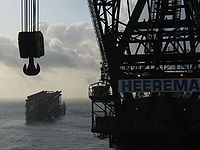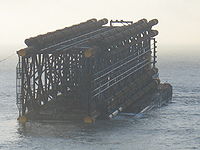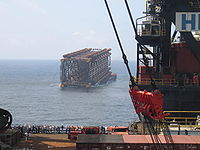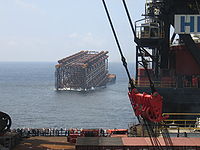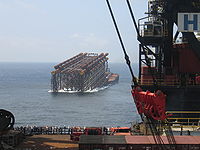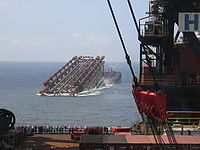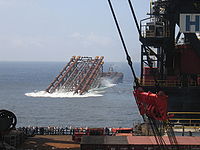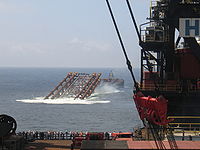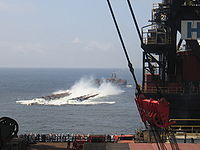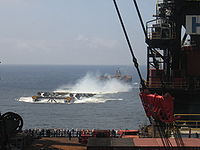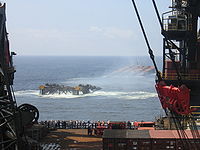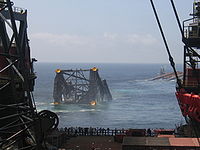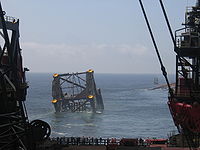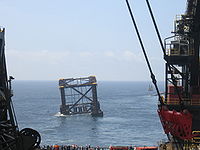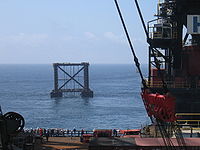- Compliant Tower
-
A compliant tower (CT) is a fixed rig structure normally used for the offshore production of oil or gas. The rig consists of narrow, flexible (compliant) towers and a piled foundation supporting a conventional deck for drilling and production operations. Compliant towers are designed to sustain significant lateral deflections and forces, and are typically used in water depths ranging from 1,500 and 3,000 feet (450 and 900 m). At present the deepest is Baldpate in 580 m of water.
With the use of flex elements such as flex legs or axial tubes, resonance is reduced and wave forces are de-amplified. This type of rig structure can be configured to adapt to existing fabrication and installation equipment. Compared with floating systems, such as Tension-leg platforms and SPARs, the production risers are conventional and are subjected to less structural demands and flexing. [1] This flexibility allows it to operate in much deeper water, as it can 'absorb' much of the pressure exerted on it by the wind and sea. Despite its flexibility, the compliant tower system is strong enough to withstand hurricane conditions. [2]
The first tower emerged in the early 1980s with the installation of Exxon's Lena oil platform.
Launching of Benguela Belize Base Tower
On April 15, 2005 the Base Tower of Benguela Belize was launched from the barge H-851. The Base Tower makes up the first 250 metres of the more than 400 metre high tower. The crane vessel that is partly visible is the Thialf. This is the heaviest compliant tower installed to date and the first outside of the Gulf of Mexico.
References
See also
Categories:- Oil platforms
- Petroleum production
- Petroleum stubs
Wikimedia Foundation. 2010.

